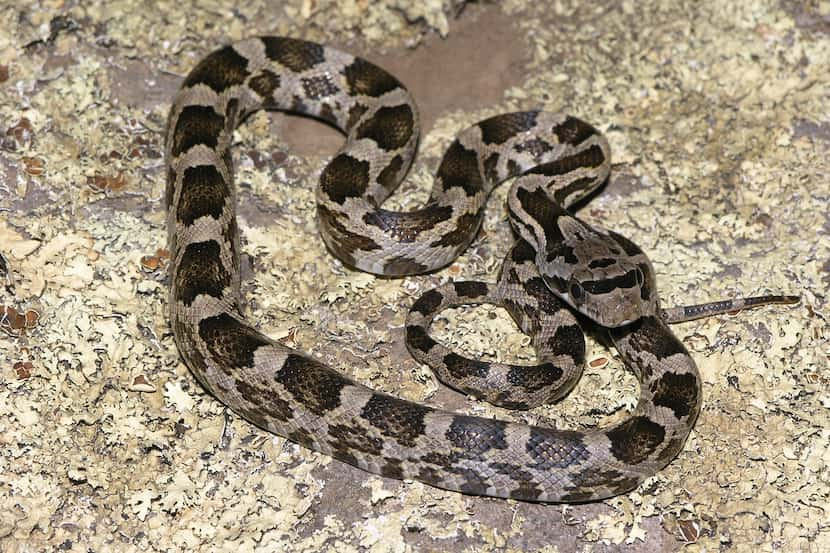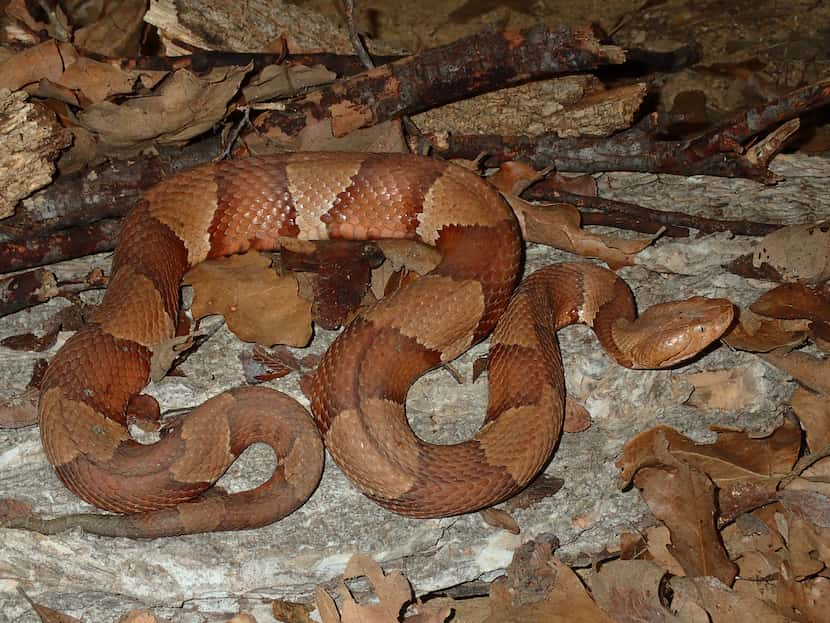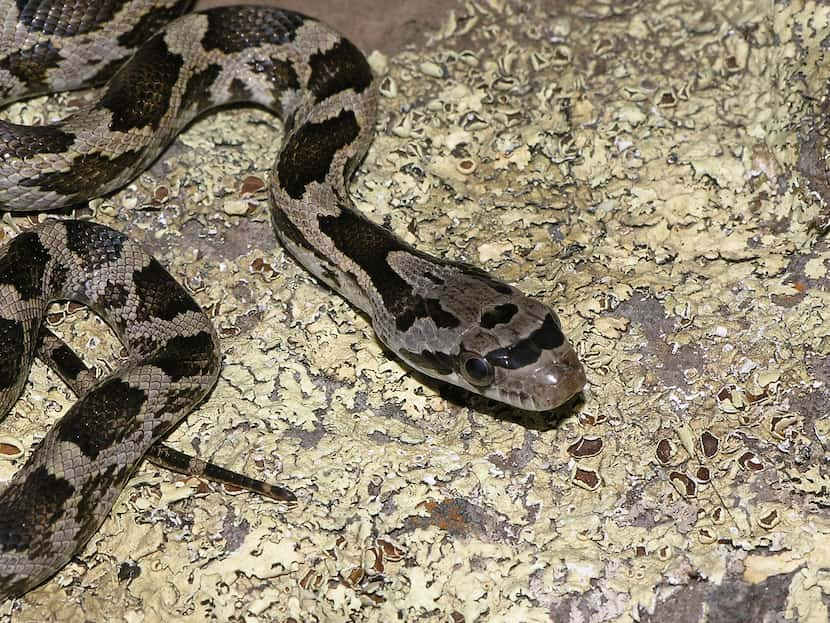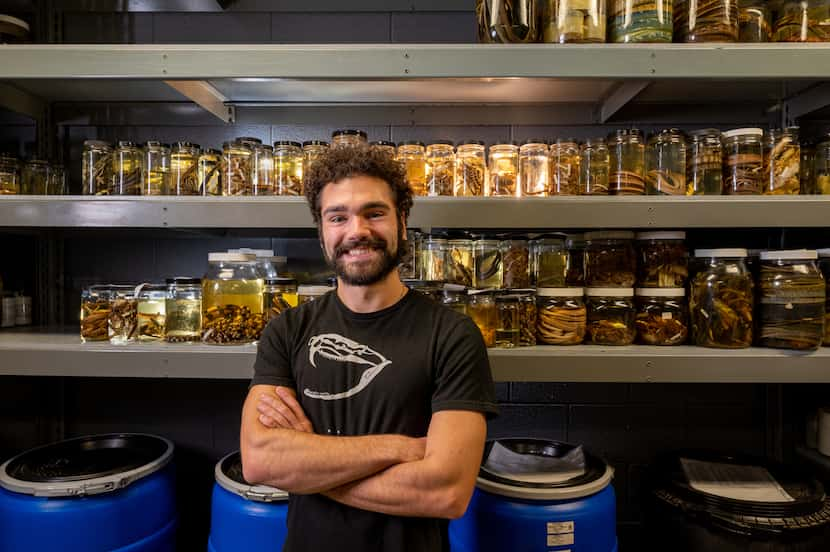What to know about snakes in the Dallas-Fort Worth area during increased spring activity
From grass to water snakes, experts share which are the most common and how to handle an encounter.

7:00 AM on Aug 3, 2022 CDT — Updated at 9:04 AM on Apr 4, 2024 CDT
Summer temperatures make a picnic or afternoon walk outside less appealing to us. But the heat is perfect for snakes to slither around. As these wriggling reptiles soak in the D-FW sun, here’s why they’re out and about, what to do if you see one and how snakes do us a favor just by existing.
Why are there more snakes around in warmer months?
While outdoor temperatures are scorching in the summer, our body temperatures don’t reach into the 100s. The reason we’re all not stumbling around feverishly on a sunny day has to do with our body’s ability to maintain a stable temperature on the inside, no matter what’s going on outside. That nifty trick makes us endotherms, or warm-blooded.
Snakes, on the other hand, don’t have this ability. They’re cold-blooded, which means their body temperature is the same as the environment around them. During chilly winter months, most snakes lie low and hide out without any heat to power them up.

Get the latest breaking news from North Texas and beyond.
But when things get hot — specifically, from about early April to November, according to Greg Pandelis — snakes sun themselves and get moving to their hearts’ content. Pandelis is the curator of the University of Texas at Arlington’s Amphibian and Reptile Diversity Research Center.
“A lot of times, you see snakes and other reptiles out basking in the sun in the early morning,” Pandelis said. “That’s so they can kind of get a head start on the day.”
What snakes are most common?
Pandelis said the copperhead, a venomous snake, can be found in urban and natural areas. The copperhead is known for its striking cream and orange colored bands and copper-colored head.

The Texas rat snake can be up to five feet long but is completely harmless. It can be gray or black in color with some lighter patterning.

Water snakes, like the harmless diamondback water snake, hang out near creeks and other bodies of water to snack on frogs and fish. They can get mixed up for the cottonmouth snake, which also hangs out near the water and is venomous. Cottonmouths are darker in color and have bands around their faces, according to Keys.
What’s the point of snakes?
Snakes are a natural pest-control agent. They eat critters like rodents and insects, keeping their numbers from spiraling out of control. “That helps us, because nobody likes to find a mouse in their house,” said Lisa Keys, a senior zoologist at the Dallas Zoo.
By chowing down on rodents, snakes also help prevent the spread of diseases through ticks on mice and rats.
Most importantly, snakes are part of an interconnected circle of life. Without snakes around, their predators, which include owls and hawks, would have less to eat, and their prey — mice and cicadas — would multiply.
Beyond that, Keys and Pandelis say snakes are pretty cool. They’ve evolved to thrive in just about every environment, all without a pair of arms or legs. “They don’t have any hands, feet or limbs, and yet they’re still able to do just about everything that we can,” said Keys.
What do I do if I see one?
Most times, the answer to this question is pretty simple: nothing.
“If you’re in a park, if you’re walking along your street and you see a snake crossing the road … they’re supposed to be there,” said Keys.
Pandelis added that people should not try to engage a snake if they see one. That’s when a bite is more likely to happen. He said to give snakes in their natural environment some space, especially if they could be venomous.
If the snake is in your home or backyard and you’d like to remove it, Pandelis said you can gently spray it with a garden hose to encourage it to move along. You can also call the DFW Herpetological Society or local snake removal services to remove snakes permanently. Pandelis said local animal control will also take snakes.
He added that if your house is near a creek or has certain natural habitats that snakes enjoy, he wouldn’t be surprised if they continue to pop up from time to time.
What snake is this?
If you spot a snake nearby and aren’t sure if it’s venomous or not, the best thing to do is to leave it alone.
But if you are curious exactly what you’re looking at and can click a picture from a safe distance, Pandelis recommended uploading a picture in the Facebook group, “What kind of snake is this? North Texas Educational Group.” The group was created by Mark Pyle, the current president of the DFW Herpetological Society.
Pandelis also said snake enthusiasts can pick up a field guide for Texas reptiles or look for global snake identification groups on Facebook.

Keys suggested downloading the app iNaturalist, which is a joint effort from the California Academy of Sciences and National Geographic Society. The app lets users upload pictures of plants and animals, and will suggest identifications based on what’s common in the area.
Pandelis and Keys said to be aware that snakes are around in D-FW, but to let them go about their business.
“They’ve been here before we’ve been here,” said Keys. “And this is their home.”
Adithi Ramakrishnan is a science reporting fellow at The Dallas Morning News. Her fellowship is supported by the University of Texas at Dallas. The News makes all editorial decisions.

Adithi Ramakrishnan, Science reporting fellow. Adithi graduated from the College of William and Mary with a degree in neuroscience and has previously written for WUNC - North Carolina Public Radio, the National Association of Science Writers, and Massive Science.
adithi.ramakrishnan@dallasnews.com adithi_r1Dallas’ Cotton Bowl Stadium could become new home for pro team under proposed city deal
/cloudfront-us-east-1.images.arcpublishing.com/dmn/6DUZIYCZCNAG3PVURU66MLCNMY.jpg)
Allen community gathers to grieve, refocus on healing 1 year after mall mass shooting
/cloudfront-us-east-1.images.arcpublishing.com/dmn/TRY4OSAJUBH2VPPYCBUXKL36ZQ.jpg)
/cloudfront-us-east-1.images.arcpublishing.com/dmn/UJKQ5QIL7ZCLRJGYVNYFLSBKRM.jpg)
/cloudfront-us-east-1.images.arcpublishing.com/dmn/QB445EFSYNHK7KDT73KK4XNTHE.jpg)
Why has Mavericks’ Kyrie Irving found peace in Dallas?
:no_upscale()/cloudfront-us-east-1.images.arcpublishing.com/dmn/O66XD4JAX3PFBYJSHUDXYVQIBE.jpg)